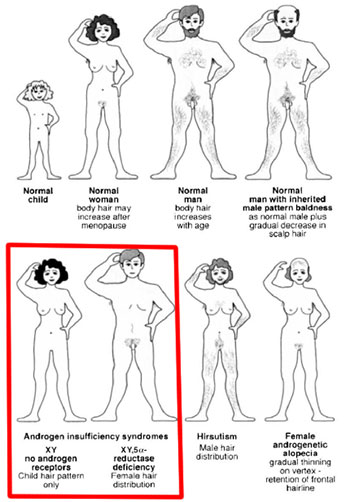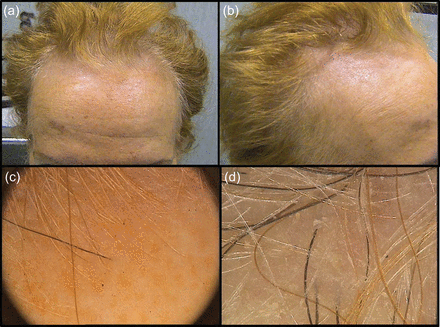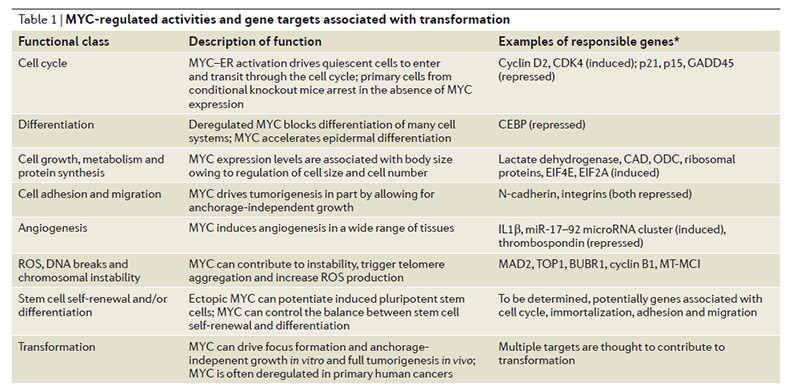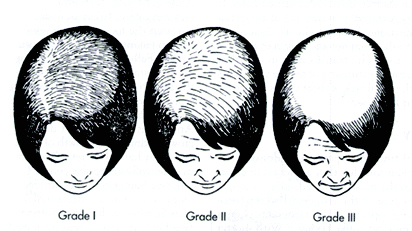It's indeed a important question to ask if inhibiting DHT or androgens as a whole doesn't do anything in terms of hair regrowth and repair but the shifting to a more estrogen environment is the cause of regrowth. Sort of a ying-yang relationship.
Yes, that would obviously be a very smart thing to do but there are some problems with that. First of all estrogen stimulation on hair follicles brings down a chain reaction that is broad and complex. So how are you going to differentiate exactly which factors are responsible for the pro hair growth effects? It is also probably a plethora of factors that make this happen instead of one or two factors. I mean we don't even understand how minoxidil exactly works on the hair follicle in terms of it's hair stimulating effect, so how are we going to understand this with something more broad and complex like estrogen? To underline the complexity with a example;
With a proper model this would be way easier as you could simply do a massive trial & error and perhaps stumble on the factors that make this happen. We could do it even then as a community. But where is our proper model in this world? Nowhere to be found. We only have a terrible model; mice.
When you look at more in depth studies of estrogen and the hair follicle like
this one and
this one it's interesting.
Other factors mentioned are the likes of WNT, SHH, MAPK, BMP's etc, which also have a huge role in hair follicle biology but let's just look at c-myc which is a gene;
Well if you look here at the description of function it doesn't take much to see that c-myc seems to work very stimulative for (stem)cells in almost every way possible. Hell you could even take this further and hypothesize that Androgenetic Alopecia might be simply a form of stressing of the cells in which they simply gradually stop performing the function that they were supposed to do. I made a post about this here and link to studies that underline something like that;
http://hairandscience.com/possible-...r-cell-cycle-arrest-in-androgenetic-alopecia/.
Therefore if Androgenetic Alopecia is simply a form of stress of the cells in which factors respond to that stress and shut down the cells from performing their normal function, something like c-myc might simply push them to start functioning again because it might for instance oppose factors that initially made the cells stop functioning. You can also see that in the table here above in the functional class of cell cycle, in which c-myc can induce factors like cyclin D2 and oppose factors like P21.
If you take on study which look at human dermal papilla cells in vitro under stimulation of DHT;
But you can't just start to induce c-myc either, because that would be dangerous (cancer etc.) I mean in the past a SHH agonist was dropped before it entered clinical trials for hair loss because they found it to be too dangerous. It still hasn't been explored while in reality it might have a effect for hair growth, but yeah just way too dangerous.
When you look at these studies of estrogen and the hair follicle as a whole and the factors mentioned it does seem that estrogen can have effect on multiple factors that seem to be stimulating for the hair follicle cycle as a whole, but can also induce factors that would oppose the "bad factors" that could be induced by androgens if indeed that is true. All hypothetical but interesting nonetheless. Obviously it all might be something different too as in reality we know f*ck all including every scientist out there.
If we take this information though and understand that even castration + 17b-estradiol can't always regrow hair to great extent, we should perhaps also maybe start to understand that it's totally unrealistic to get a traditional drug that will reverse Androgenetic Alopecia. It's seems extremely unlikely for me at this point that's why I often argue hitting on the androgen/AR angle and estradiol is pretty much as good as it will get. Regenerative medicine and gene therapy seems much more realistic and practical to me.
Also we must not forget that the hair follicle is an organ and too much damage to a organ may really make it irreversible. This has really been shown too as in a certain timepoint fibrosis may set in due to Androgenetic Alopecia and this can lead to irreversible damage to the hair follicle due to infiltration of the scar tissue. Only creating a new hair follicle seems to be the answer here.
I hope this was not too difficult or overwhelming I tried to explain it as simple as I could, but just look at it from a abstract point view and just think of factors in one square that are bad and other factors in a square that are good for the hair follicle (stem) cells.
- - - Updated - - -
I just gave food for thought. It's true that females indeed seem to suffer more from a diffuse pattern. That's why we need way more studies that are more in depth and focus on the site specific differences of hair follicles (patterning) on the scalp like receptor expression differences etc. That would broaden our understanding of sex hormones on the hair follicle but I guess that is even too much too ask. We have limited research to look at.




